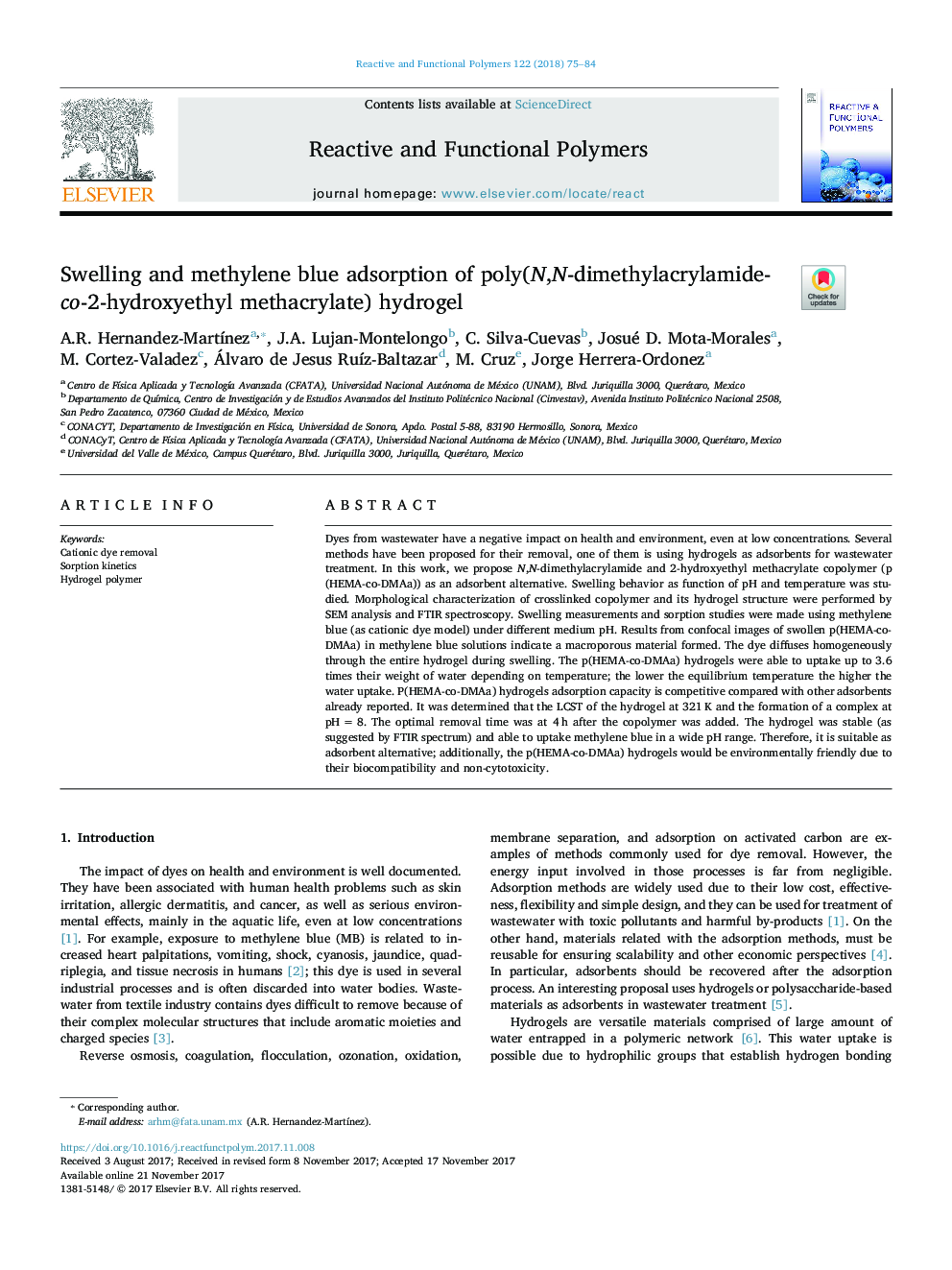| Article ID | Journal | Published Year | Pages | File Type |
|---|---|---|---|---|
| 7826481 | Reactive and Functional Polymers | 2018 | 10 Pages |
Abstract
Dyes from wastewater have a negative impact on health and environment, even at low concentrations. Several methods have been proposed for their removal, one of them is using hydrogels as adsorbents for wastewater treatment. In this work, we propose N,N-dimethylacrylamide and 2-hydroxyethyl methacrylate copolymer (p(HEMA-co-DMAa)) as an adsorbent alternative. Swelling behavior as function of pH and temperature was studied. Morphological characterization of crosslinked copolymer and its hydrogel structure were performed by SEM analysis and FTIR spectroscopy. Swelling measurements and sorption studies were made using methylene blue (as cationic dye model) under different medium pH. Results from confocal images of swollen p(HEMA-co-DMAa) in methylene blue solutions indicate a macroporous material formed. The dye diffuses homogeneously through the entire hydrogel during swelling. The p(HEMA-co-DMAa) hydrogels were able to uptake up to 3.6 times their weight of water depending on temperature; the lower the equilibrium temperature the higher the water uptake. P(HEMA-co-DMAa) hydrogels adsorption capacity is competitive compared with other adsorbents already reported. It was determined that the LCST of the hydrogel at 321Â K and the formation of a complex at pHÂ =Â 8. The optimal removal time was at 4Â h after the copolymer was added. The hydrogel was stable (as suggested by FTIR spectrum) and able to uptake methylene blue in a wide pH range. Therefore, it is suitable as adsorbent alternative; additionally, the p(HEMA-co-DMAa) hydrogels would be environmentally friendly due to their biocompatibility and non-cytotoxicity.
Keywords
Related Topics
Physical Sciences and Engineering
Chemistry
Organic Chemistry
Authors
A.R. Hernandez-MartÃnez, J.A. Lujan-Montelongo, C. Silva-Cuevas, Josué D. Mota-Morales, M. Cortez-Valadez, Álvaro de Jesus RuÃz-Baltazar, M. Cruz, Jorge Herrera-Ordonez,
